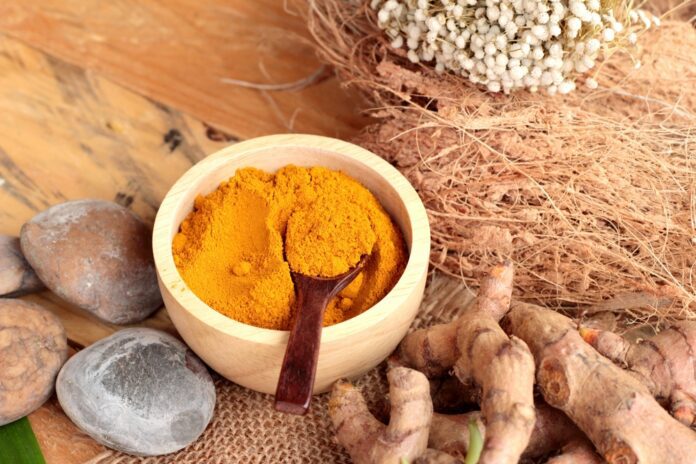Inflammation can be a blessing in disguise. Alternatively, it can also be a nuisance. The statements, as contradictory as they may seem, are not in contradiction. Here is why.
When you bump your toe at the side of your bed, the injured area becomes red and painful. These are the first signs of inflammation. They indicate that the body’s first responders to foreign attacks are here to fight them off.
The pain acts as an indicator to stop further contact of our body with the damaging stimuli. The redness indicates an influx of blood and its support elements (like white blood cells) that comprise our immune system.
Inflammation is part of our body’s defense mechanism. Inflammation can also get activated in response to an invasion by disease-causing stimuli such as infectious bacteria and viruses. The biological processes work to remove the potentially damaging foreign components from the body and contribute to the injured area’s healing; This is how inflammation is a blessing.
Sometimes this same defense mechanism mistakenly marks the body tissues as intruders. It sets off an inflammatory response against the healthy tissues, thereby causing damage. This is what we recognize as a disease.
The disease also develops when an acute inflammatory response ensues unchecked for an extended period. This is how inflammation can become a nuisance for our body.
What Is Inflammation?
The process of inflammation is present within everybody. You may not even be aware of it, but your body is engaged in combating all types of harmful agents, be it bacteria, viruses, fungi, chemicals, radiations, injury-causing agents and so on. The truth is that your body would be incapacitated without an effective inflammatory response. Why? Because inflammation is our body’s immune response to an irritating stimulus.
Types Of Inflammation
There are two types of inflammation: acute & chronic. Acute is a short-term inflammatory process. It is rapid in onset and lasts for only a few hours to a few days. The signs and symptoms of acute inflammation are usually localized and limited to the site of origin. Sometimes, the acute version is silent with no apparent signs and symptoms except for fever or general fatigue. This type of inflammation heals and restores the body to its pre-injury state.
Chronic is the type that lasts for months, or even years. It may also occur in places where it is not needed. The signs and symptoms of chronic inflammation usually affect the whole body. Despite its longevity, chronic inflammation is slow in onset. That is why it tags terms like persistent and low-grade with it.
There may or may not be an initial stimulus for it to begin. Also, it does not necessarily end upon the removal of the initial stimulus. That is why chronic inflammation is almost always at the heart of a chronic disease or autoimmune state, for example, heart ailments, diabetes, arthritis, allergies, cancer, etc.
Signs And Symptoms Of Inflammation
There are five signs and symptoms of acute inflammation. These vary in severity depending on the site of origin and can include:
- Pain
- Swelling
- Redness
- A rise in temperature of the affected site
- Loss of function
The signs and symptoms of chronic inflammation include:
- Generalized body aches and pains
- Constant fatigue and lethargy
- Frequent infections
- Sleep disturbances like insomnia
- Depression
- Anxiety
- Mood disorders
- Unexplained weight gain
- Gastrointestinal complaints like diarrhea, constipation, or acid reflux
Symptoms of chronic inflammation can vary. It also depends on the disease condition with an inflammatory component. For example, skin rashes or hormonal disturbance occur when chronic inflammation involves the skin or an endocrine gland.
Pathogenesis Of Inflammation
Here is what happens in the case of acute inflammation:
- Damaged tissue releases chemicals called cytokines
- Cytokines call for immune cells, hormones and other nutrients to the injured site
- Localized and blood vessels adjacent to the site of injury dilate
- Blood flow increases to the injured site
- White blood cells rush to the area, promoting repair and healing
- Chemicals called prostaglandins to stimulate the formation of blood clots as part of the repair process
All these processes increase the local temperature. If inflammation is extended over a large area, fever ensues. Prostaglandins also trigger pain. As the healing and repair continue, the inflammation subsides.
In contrast, chronic inflammation is characterized by a low level of inflammatory markers in the blood or specific tissue. This leads to a low persistent inflammation. The triggers for this type of inflammation may be misperceived or supposedly identified even in the absence of an actual threat. This signals for the immune system to deliver its response. The immune elements, like white blood cells, arrive as a response, but there is nothing to execute. So they attack the otherwise healthy tissues and cells.
This is the basis of autoimmunity or chronic disease initiation and progression. For example, in cancer, the low persistent inflammation causes changes in the DNA and instigates uncontrolled cell division and proliferation as happens in cancer.
How To Measure Inflammation
There are different tests to diagnose inflammation in the body. They include:
- Blood tests
Chemicals called inflammatory markers help indicate something wrong in the body. They are not specific but call for further investigations to know the root cause of inflammation.
- Erythrocyte sedimentation rate (ESR)
ESR is the simplest and most convenient test to indicate inflammation. A blood sample is placed in a tall and thin test tube. The rate of settling down of red blood cells is noted. Results are read as the millimeters of clear plasma present at the top portion of the tube after one hour when the blood cells have settled down.
Inflammation causes increased proteins in the blood. The proteins stick to the red blood cells, increasing their bulk. It causes the blood cells to settle down rapidly, leaving the more clear plasma. This gives a high ESR reading, indicative of inflammation in the body.
ESR may be raised in many other conditions besides inflammation. Though a non-specific test, ESR is very convenient in the absence of specialized laboratory tests and monitoring disease progression.
- C-reactive proteins (CRP)
CRP is another inflammatory marker released in response to inflammation by the liver. CRP is found in both acute and chronic inflammatory processes.
- Serum protein electrophoresis
Serum protein electrophoresis is the most sensitive and accurate test to diagnose inflammation.
- Plasma Viscosity
Plasma viscosity measures the thickness of the blood. The thicker it is, the more chances of inflammation or infection in the body.
- Cytokine Detection
Pro-inflammatory cytokines like tumor necrosis factor-alpha (TNF-alpha), interleukin-1 beta (IL-1beta), interleukin-6 (IL-6), and interleukin-8 (IL-8) are also indicative of inflammation, specifically chronic types.
- Imaging techniques
Imaging techniques have significantly advanced. MRI, X-rays and other methods help to identify inflammation in different parts of the body.
How To Manage Inflammation
Overlooking inflammation can become a health risk. Acute infections like allergic attacks require immediate attention. Chronic ones may progress to chronic disease states. If not treated timely, inflammation may spill over into blood, causing septicemia, a potentially fatal condition.
Anti-inflammatory Medicines
It is essential to treat the underlying cause of inflammation. Once diagnosis leads to a specific stimulus causing inflammation, your doctor aims to remove that root cause first. For example, prescribing antibiotics for a bacterial infection.
Besides addressing the root cause, concomitant therapy with support medicines also help to alleviate inflammation. These include
- Non-steroidal anti-inflammatory drugs (NSAID)
NSAIDs help relieve fever, pain and swelling associated with inflammation. They do not have any direct impact on counteracting inflammation. Aspirin, ibuprofen, naproxen are some examples of over-the-counter NSAIDs.
- Corticosteroids
Corticosteroid drugs are the last option to treat inflammation because their long-term use can have harmful side effects. These work fast to bring anti-inflammatory relief, available as pills, ointments, inhalers, injections, or topical preparations.
- Analgesics or medicines for pain relief
- Paracetamol is one of the common acetaminophen prescribed for relieving pain.
Anti-inflammatory Supplements
Due to the side effects of today’s modern medicines, many people opt for herbal and other dietary supplements to ease inflammation. Here are some well-known names in this regard.
- Harpagophytum procumbens or devil’s claw
- Hyssop
- Ginger
- Turmeric (curcumin)
- CBD
- Alpha-lipoic acid
- Omega-3 fatty acids (fish oil and flaxseed)
- Resveratrol
- Ashwagandha
- Spirulina
- S-adenosylmethionine
- Zinc
- Green tea extract
- Frankincense or Boswellia Serrata
- Capsaicin
- Bromelain
- Cat’s claw
- Chondroitin
- Omega-6 fatty acids as Gamma-linolenic acid (GLA)
- MSM or methylsulfonylmethane
- Quercetin
The list may go on, but it is essential to remember that dietary supplements are not a one-stop solution for inflammation. A healthy lifestyle, including healthy eating patterns and exercise, also play their role. Once an inflammatory process ensues in the body, proper diagnosis and treatment are mandatory to restore the body to its vigorous state.
An Anti-inflammatory Diet
If you are skeptical about the term anti-inflammatory diet, then know this; particular food does stimulate and promote inflammation in the body. Studies reveal that individuals with high CRP levels were found to include less healthy fats and fresh produce as well as:
- Processed food
- Foods containing high amounts of sugar, salt and other synthetic additives
- Fried foods
- Foods containing saturated and trans-fats
- Simple carbohydrates like in baked products, white pasta, bread, etc
- Excess of alcohol
Some people are allergic to gluten and plant-based foods belonging to the nightshade family (tomatoes, eggplants, peppers and potatoes). A nutritionist can guide you better on what ingredients to include in your meals and what to opt-out of in such a case. However, there are food elements that support healing and repair in the body. These anti-inflammatory food elements are rich in nutrients that reduce inflammation. Such foods are:
- Fresh fruits and vegetables, specifically green leafy veggies and citrus fruits
- Olive oil
- Food rich in fiber like whole grains
- Nuts and seeds
- Fatty fish
- Lean proteins
- Spices and herbs
- Prebiotic and probiotics foods (kombucha, kimchi, etc.)
Anti-inflammatory foods are enriched with antioxidants. The antioxidants are equipped to combat the damaging free radicals produced in the body due to metabolic reactions. These free radicals cause cell damage and instigate inflammation throughout the body.
The DASH Diet and the Mediterranean Diet are some of the best anti-inflammatory diets. They may not root out already established inflammation cases altogether, but they certainly help slow the progression of health-damaging processes in the body.
It is important to note that no single food ingredient can fight off inflammation. You need to have a variety of nutrient-dense food regularly to keep your health status. Remember a simple rule; the more colorful and fresh your servings are, the more antioxidants they contain. Cook your veggies for the least possible time and preserve their nutrient content.
Still not convinced to eat your veggies? A meta-analysis showed that people who consumed a vegetarian-based diet had low levels of inflammatory markers.
Does Exercise Have A Role To Play In Warding Off Inflammation?
Regular exercise has a definitive role in alleviating inflammatory processes. Exercise is particularly recommended as we age. Chronic low-grade inflammation contributes to chronic disease development. Physical activity reduces this risk.
Studies have shown that the elderly contain an increased number of inflammatory markers, even in the absence of any disease. Simultaneously, some studies concluded that healthy elderly did not have any significant amount of inflammatory markers. This indicates that inflammation has a role to play in aging and disease development. Then as we age, the levels of reactive free radicals also increase. It also remains an important contributor to chronic inflammation.
It is important to note that high-intensity exercise for the first time causes inflammation, as evidenced by the sore muscles and other post-exercise symptoms. However, with continued physical activity, the muscles adapt to the overload stress. Studies reveal that regular cardio decreases the pro-inflammatory markers in the blood.
The effect of exercise in reducing inflammation is a subject topic in itself. To summarize, here is how exercise helps cut back inflammation:
- Reduces fat mass that contributes to systemic inflammation
- Increase the production of interleukin-6 from muscles, which in turn decrease the production of anti-inflammatory markers like cytokines
- Increase the vagal tone (tone of the Vagus nerve) known to counteract inflammation
- Activates the hypothalamic-pituitary-adrenal axis and sympathetic nervous system which cause the release of anti-inflammatory cortisol (corticosteroid) and catecholamine (dopamine, norepinephrine and epinephrine)
Inflammation is the hub of aging and chronic disease. Though anti-inflammatory drugs are an effective remedy against inflammation, they have many side effects tagged with them. They are expensive and associated with decreased patient compliance with time. Lifestyle interventions like dietary modifications, supplementation and exercise remain low-cost and long-term treatment modules against inflammation.








